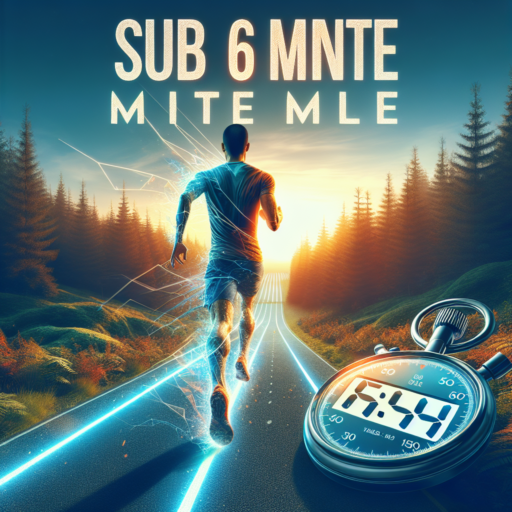What is the Typical Jogging Speed for Beginners?
Understanding the typical jogging speed for beginners is crucial for anyone just starting out on their running journey. It helps in setting realistic expectations and crafting a jogging routine that promotes consistency and injury prevention. Generally, the jogging speed for beginners can greatly vary depending on several factors including fitness level, age, and personal health conditions. However, there is a common range that serves as a good starting point for novice joggers.
On average, the jogging speed for beginners is often found to be between 4 to 6 miles per hour (mph). This speed range is considered comfortable and sustainable for those who are new to jogging. It allows beginners to maintain a pace that doesn’t overly strain the cardiovascular system but is brisk enough to provide significant health benefits. Importantly, starting within this speed range also enables new joggers to focus on their form, ensuring they are running efficiently and minimizing the risk of injury.
It’s essential for beginners to listen to their bodies and adjust their jogging speed as needed. Some days, it might be possible to jog at the higher end of the typical speed range, while on others, it might be necessary to stay at the lower end. This adaptability is key to building stamina and improving over time while avoiding burnout. Beginners should not compare their speed to more experienced runners but instead, focus on personal improvement and gradually increasing their pace and distance as their fitness improves.
How to Determine Your Ideal Jogging Pace
Finding your ideal jogging pace is a balance between challenge and comfort, ensuring that you’re maximizing your workout effectiveness without risking injury or burnout. It’s about personalizing your running regimen to fit your fitness level and goals.
Listen to Your Body: Your body is an excellent indicator of what’s working and what isn’t. Pay attention to your breathing and the ability to hold a conversation while jogging. If you’re gasping for air, you’re likely pushing too hard. Conversely, if you can easily chat without any effort, you might want to increase your pace. A good jogging pace should allow you to speak in short sentences comfortably.
Use Technology: Technology offers a myriad of tools to help identify your ideal pace. Apps and wearables can track your speed, distance, heart rate, and even suggest adjustments to find your perfect speed. Start with a comfortable pace and gradually make adjustments based on the feedback from your device. Remember, the goal is gradual improvement without overexertion.
The Health Benefits of Maintaining a Steady Jogging Speed
Jogging regularly at a steady speed is not just about improving your running time; it’s a matter of prioritizing your overall health and well-being. This simple, yet highly effective form of exercise has been shown to have profound health benefits that go way beyond just burning calories. By settling into a consistent jogging pace, you enable your body to adapt and optimize its cardiovascular performance, which is beneficial for heart health and much more.
Enhanced Cardiovascular Fitness
Regular jogging at a steady pace plays a crucial role in enhancing cardiovascular fitness. It strengthens the heart, enabling it to pump blood more efficiently and deliver oxygen to your muscles with greater ease. This improved circulation can lead to a reduction in your resting heart rate, signifying a heart that’s efficient and robust. Steady pace jogging also helps in maintaining healthy blood pressure levels, which is essential for preventing heart disease and strokes.
Improved Muscular Endurance
Maintaining a consistent jogging speed not only builds cardiovascular health but also significantly improves muscular endurance. Your leg muscles, including calves, glutes, quadriceps, and hamstrings, benefit immensely from the regular, rhythmic movement of jogging. This type of exercise teaches your muscles to become more efficient at using oxygen and fuels for longer periods, which can enhance your stamina and reduce fatigue during everyday activities.
Jogging at a steady pace allows for a sustainable form of exercise that encourages patience and persistence. It’s achievable for most individuals and can lead to long-term fitness habits. By integrating this simple exercise into your routine, you’re not just investing in your current health but also ensuring a fitter, more resilient body for the future.
Comparing Jogging Speeds: How Fast Should You Really Go?
Understanding the optimal jogging speed can be a game-changer for those looking to enhance their fitness routine effectively. It’s important to recognize that jogging speeds can vary significantly based on individual fitness levels, goals, and the body’s response to exercise. By comparing different jogging speeds and their impacts, individuals can tailor their workouts to better suit their personal objectives, whether it be improving cardiovascular health, losing weight, or increasing endurance.
The average jogging speed for a person can range anywhere from 4 to 6 miles per hour (mph). However, determining the right pace goes beyond mere numbers. It involves evaluating how your body feels during the jog and the goals you’ve set for yourself. For beginners, starting at the lower end of this spectrum is advisable, gradually increasing the pace as stamina and fitness improve. For experienced joggers, maintaining a quicker pace can help in pushing the boundaries of endurance and strength.
Key Factors to Consider When Choosing Your Jogging Speed
- Physical Fitness Level: A person’s current fitness level plays a crucial role in determining a safe and effective jogging speed.
- Health Goals: Whether the focus is on weight loss, endurance, or cardiovascular health, jogging speeds can be adjusted to meet these specific targets.
- Body’s Response: Listening to one’s body is vital; signs of overexertion or discomfort indicate the need to adjust the jogging pace.
While averages serve as a guideline, personal experience and goals should ultimately shape your jogging speed. Integrating interval training, where joggers alternate between faster and slower speeds, can also be an effective way to enhance cardiovascular fitness and endurance, suggesting that variability in pace, rather than a fixed speed, may yield the best results over time.
No se han encontrado productos.
Improving Your Jogging Speed: Tips and Strategies
Improving your jogging speed requires a combination of consistent practice, smart training strategies, and the right mindset. Whether you’re a beginner looking to run your first 5K or an experienced jogger aiming to hit a personal best, several key approaches can help you pick up the pace and improve your overall performance. In this section, we’ll explore some effective tips and strategies designed to boost your jogging speed.
Integrate Interval Training
Interval training is a powerful tool for runners seeking to enhance their speed. This technique involves alternating between periods of high-intensity running and low-intensity jogging or walking. For example, after a warm-up, you could sprint for 30 seconds followed by 1 minute of walking or slow jogging. Repeat this pattern for 15 to 20 minutes. Interval training helps improve aerobic capacity, endurance, and speed by pushing your body out of its comfort zone.
Incorporate Strength Training
While jogging primarily targets your cardiovascular system, strength training focuses on building the muscles you use while running. Stronger leg muscles, especially, can significantly improve your running efficiency and speed. Incorporating exercises like squats, lunges, and deadlifts into your routine two to three times a week can lead to noticeable improvements in your jogging speed over time. Additionally, core strengthening exercises enhance stability, posture, and running form, further contributing to speed enhancement.
To truly make strides in improving your jogging speed, perseverance in practice combined with a strategic approach to training is essential. Adapting these tips and strategies into your routine can pave the way for noticeable improvements in your speed and overall running performance. Remember, progress takes time and consistency, so maintain your focus and keep pushing your limits.
Average Jogging Speeds by Age and Gender
Understanding the average jogging speeds by age and gender is crucial for anyone trying to gauge their fitness levels or set realistic running goals. Whether you are just starting out, looking to improve your pace, or are curious about where you stand, it’s essential to consider how both age and gender can influence jogging speeds. With this knowledge, joggers can tailor their training programs more effectively and set achievable targets.
Age-related differences in physical capabilities suggest that younger runners often have faster jogging speeds compared to older adults. Muscular strength, endurance, and flexibility tend to peak during a person’s 20s and 30s, gradually declining thereafter. Consequently, the average jogging speeds for individuals in their 20s might look significantly faster than for those in their 50s or 60s. However, consistent training and maintaining an active lifestyle can considerably mitigate the impacts of aging on jogging speed.
When it comes to gender differences, men generally tend to jog at a faster pace than women. This disparity is largely attributed to physiological differences, including muscle mass, cardiovascular efficiency, and lung capacity. It’s important for joggers to understand that these differences do not necessarily reflect fitness levels but rather the physiological variances between genders. By recognizing these factors, runners can focus on personal improvement without undue comparison to others.
Understanding the Difference: Jogging Speed vs. Running Speed
When it comes to cardiovascular exercises, jogging and running are at the forefront of boosting heart health, burning calories, and improving overall fitness. However, the distinction between jogging speed and running speed might not be clear to everyone. This crucial difference not only affects how we classify our workouts but also influences the outcomes we achieve from them.
Jogging, often characterized by its leisurely pace, focuses more on endurance than speed. Typically, jogging speeds are considered to be less than 6 mph (around 9.65 km/h). This pace allows for sustained physical activity, making it accessible for beginners or those looking for a moderate-intensity workout. Jogging is excellent for building cardiovascular fitness at a pace that doesn’t overly stress the body.
In contrast, running encompasses a more intense effort, classified by speeds over 6 mph. Running is aimed at pushing the limits of one’s cardiovascular and muscular endurance. It is beneficial for those who wish to improve their speed, power, and overall athletic performance. The increased pace not only accelerates calorie burning but also can contribute to better heart health and muscle definition over time.
How to Use Technology to Track and Improve Your Jogging Speed
In the modern era, leveraging technology to boost your jogging speed has become increasingly popular among athletes and casual runners alike. With the advancement of wearable devices and dedicated smartphone applications, tracking your progress and identifying areas for improvement has never been more straightforward. Utilizing these tools effectively can lead to significant improvements in your running pace, endurance, and overall fitness levels.
Choosing the Right Tracking Tool
Selecting the appropriate technology is crucial for accurately monitoring your jogging speed and progress. Wearable devices like GPS watches and heart rate monitors offer real-time feedback on your pace, distance, and effort level. Meanwhile, smartphone applications can provide detailed analytics post-jog, allowing you to analyze your performance and set future goals. For those serious about improving, integrating both tools can provide a comprehensive overview of your running journey.
Setting Achievable Goals
With your chosen technology in hand, it’s essential to set realistic and achievable goals. Use the data collected by your devices to establish baseline speeds and set incremental targets. Tracking these improvements over time can not only motivate you but also highlight the effectiveness of your training techniques and adjustments. Remember, consistency is key to seeing tangible results.
By embracing technological aids and incorporating them into your running routine, you can unlock new potentials in your jogging speed and overall performance. The journey towards faster running begins with understanding and utilizing the data at your fingertips, making informed decisions on your training approaches, and staying dedicated to your set goals. The right combination of technology, goal-setting, and perseverance will no doubt lead to noticeable improvements in your jogging speed.
Common Mistakes That Can Affect Your Jogging Speed
Improving your jogging speed is often a central goal for many runners, but it’s easy to fall into certain pitfalls that can unexpectedly hinder your progress. Acknowledging and correcting common mistakes is crucial for any runner looking to boost their speed and efficiency. Here, we will delve into several habitual errors that could be sabotaging your jogging speed.
Ignoring Proper Warm-Up Routines
One of the most significant oversights is skipping or inadequately performing warm-up routines before a jog. A proper warm-up prepares your body for the physical stress of running, increasing blood flow to your muscles, and enhancing flexibility. Failure to warm up can not only affect your speed by making your movements stiffer and less efficient but also increases your risk of injury, which can further set back your speed improvement efforts.
Inconsistent Training Schedules
Consistency is key when it comes to improving your jogging speed. An inconsistent training schedule can impede your progress significantly. Muscular strength and endurance, critical for speed, are built over time through regular training. Irregular jogging sessions prevent your body from adapting and improving, leading to stagnation or even regression in your speed.
Neglecting Recovery and Nutrition
Finally, overlooking the importance of recovery and nutrition can be a detrimental mistake for runners aiming to increase their jogging speed. Recovery time allows your muscles to heal and strengthen, making them more capable of powerful and swift movements. Conversely, inadequate recovery can lead to overuse injuries or burnout, severely impacting your speed. Additionally, proper nutrition provides the necessary fuel for your runs, and neglecting this aspect can leave you feeling sluggish and slow.
Frequently Asked Questions About Typical Jogging Speed
When it comes to understanding the typical jogging speed, there are several common questions that enthusiasts and beginners alike tend to ask. The pace at which individuals jog can vary widely, influenced by numerous factors such as individual fitness levels, goals, and even the terrain. Here, we tackle some of the most frequently asked questions to shed light on what you might expect from your jogging endeavors.
What Is Considered a Good Jogging Speed?
A good jogging speed, for many, falls within the range of 4 to 6 mph (6.4 to 9.7 kph). However, it’s essential to remember that what constitutes a ‘good’ speed is highly personal. Fitness goals, endurance levels, and even the length of the jogging session play a critical role in determining an appropriate pace. Beginners might find themselves comfortable at the lower end of this spectrum, while more seasoned joggers could aim for speeds at or above this range.
How Can I Measure My Jogging Speed?
Measuring your jogging speed can be easily done with the use of a smartphone app, GPS watch, or even a simple stopwatch and a known distance. Tracking your speed over time is an excellent way to gauge progress. Many joggers use apps that map their route and provide real-time speed data, allowing for adjustments mid-jog for those trying to maintain or improve their pacing.
Understanding the intricacies of jogging speed can enhance your experience and help you set realistic fitness goals. While the quest for improvement is a common theme among joggers, it’s important to prioritize personal comfort and gradual progression over hitting arbitrary speed benchmarks. Remember, every jogger’s journey is unique, and what matters most is finding a pace that feels right for you.




